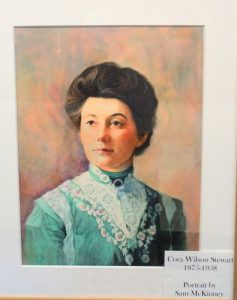 The Kentucky Girl
The Kentucky Girl
(commencement speech on graduating from teacher’s college)
While other girls were posing, their charms being exhibited, their characteristics discussed. There has lived and walked, among the evergreen pines and the sturdy oaks, of the mountains of Kentucky, a creature with more depth of soul.
More nobility of character, more perfection of face and form than any that Gibson’s brush or Sarah Orme Jewett’s pen have ever flaunted in the face of the public…
She has not walked on velvet carpets, or surveyed herself in costly mirrors. But God made rare provision for this superb creature, which art can never approach.
And she treads softly on carpets of green, velvety moss. Which the rich, with all their wealth, can scarcely imitate. And she gazes without cost in the mountain spring, which gives back a more perfect reflection than any mirror constructed by man…
The mountain girl is not a girl of the past, of whom no new thing can be said, but she is a rare, radiant creature of the future. Others have reigned and passed from view, their triumphs forgotten and their songs echoing but faintly back through the distant ages.
But the mountain girl stands today on the mountain top, her gaze fixed still higher. She is entering into the possession of her own a highly, carefully cultivated mind. And when this is accomplished, when the crown of learning is set upon her head, she will reign queen of all the earth.
Reaching out her hands beneficently to struggling humanity everywhere.
Cheering the faint and fallen, leading the blind, supporting the feeble, teaching the illiterate,
And doing God’s service to all mankind.
(Missionary Tidings (1904) from the Moonlight Schools Collection at Morehead State University)
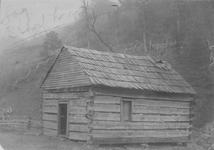 Miss Cora & the Kentucky Mountain People
Miss Cora & the Kentucky Mountain People
Cora was a mountain girl with the upbringing of a city girl; and though she became recognized and honored in the city — throughout America — and around the world — her heart never lost its first love –- the mountain folk in Kentucky.
She loved the mountain children, and taught them in her self-made school, when she was merely 5 years old, while insisting that her friends call her Miss Cora. She listened and observed her father, the country doctor, when he treated the victims of local, sometimes deadly, feuds. And she sat at table with him, when he invited honored visitors from strange and interesting places outside their mountain home.
She helped her faithful mother (who brought her to church and taught her to pray) with the upbringing of younger siblings when her father was away, at the Kentucky School of Medicine.
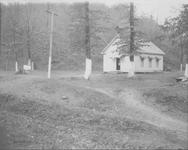 She became a schoolteacher at age 15, a duty which she performed while attending a teacher’s school which was supported by the Christian Woman’s Board of Missions, (Morehead Normal School). And she continued in her educational pursuits, reaching higher levels, both as a student and as a teacher.
She became a schoolteacher at age 15, a duty which she performed while attending a teacher’s school which was supported by the Christian Woman’s Board of Missions, (Morehead Normal School). And she continued in her educational pursuits, reaching higher levels, both as a student and as a teacher.
She listened when her younger brother, a lawyer, and member of the Kentucky House of Representatives, encouraged her to run for the office of Superintendent of Rowan County Schools. And she won.
In her various jobs, schooling, and political work, she continually met people who couldn’t read or write, and she often volunteered to help and encourage them with their writing needs. The number of illiterate adults in her county was astounding, and she decided to do more about it.
Then, in 1911, Superintendent Cora Wilson Stewart opened her “Moonlight Schools”, for adult literacy classes. In her book, Moonlight Schools for the Emancipation of Adult Illiterates, (1922), Mrs. Stewart introduces her colorful adult students, the volunteers who helped recruit and teach them, and the motivating factors that led to the opening of these schools.
“In the mountains of Kentucky there has been buried a treasure of citizenship, richer far than all its vast fields of coal, its oil, its timber or mineral wealth. Here live a people so individual that authors have chosen them as their theme, and artists as their subjects, to interpret to the world a people with a character distinctive, sturdy, independent and rugged…
“Of all the [authors and artists] who have chosen them as their theme, none have seemed to catch, or at least, all have failed to portray, the dominant thing in mountain life, the strongest urge of the mountaineer’s soul – his eager, hungry, insatiable desire for knowledge.” (Moonlight Schools)
These were Cora’s People. The one’s she foresaw in her 1904 oration (Kentucky Mountain Girl). Her opportunity had come. And now, seven years later, she began to fulfill her dream of “reaching out her hands beneficently, cheering the faint and fallen, leading the blind, supporting the feeble, teaching the illiterate, and doing God’s service to all mankind.”
In her book, Mrs. Stewart describes three specific individuals who, with their combined stories, created her motivation to begin teaching the mountain men and women of Kentucky.
While serving as county superintendent, she also volunteered as a secretary to several illiterate folk. She described three of them. One was a mother, whose daughter sent her letters which she was unable to answer. Another was a stalwart, intelligent middle-aged man, who confessed to her that he couldn’t read, adding that he would give twenty years of his life if he could read. And the third was a talented young songwriter who often forgot the lyrics to his songs, because he had no one to write them down for him. These three people, and those who shared similar stories, were the powerful force behind her establishment of night schools in the one-room schoolhouses of Kentucky.
She was beginning to see the fulfillment of her dream.
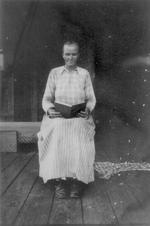 Moonlit Schools Begin their Classes
Moonlit Schools Begin their Classes
Mrs. Stewart called together the Rowan County teachers. She asked them to extend their teaching days into the evenings. After teaching children in the daytime, they would welcome adults. On a voluntary basis.
“To their everlasting credit be it said that not one of those teachers expressed a doubt or offered an excuse, but each and everyone of them, without a single exception, volunteered to teach at night after she had taught all day, and to canvas her district in advance to inform the people of the purpose of these schools and to urge them to attend.”
Adults were invited to come and learn. She chose to hold classes on moonlit nights, since so many had treacherous paths to cross on their way.
“They had rugged roads to travel, streams without bridges to cross, high hills to climb, children to lead and babes to carry, weariness from the hard day’s toil; but they were not seeking excuses, they were seeking knowledge, and so they came… Walking for miles, they came carrying babes in arms, they came bent with age and leaning on canes.”
 Twelve hundred students arrived for their first class, at schoolhouses scattered throughout the county. Though she had anticipated about 150. (Their ages ranged from 18 to 86 years.) “On September 5, the brightest moonlight night, it seemed to me, that the world had ever known, the moonlight schools opened for their first session.”
Twelve hundred students arrived for their first class, at schoolhouses scattered throughout the county. Though she had anticipated about 150. (Their ages ranged from 18 to 86 years.) “On September 5, the brightest moonlight night, it seemed to me, that the world had ever known, the moonlight schools opened for their first session.”
“Just to learn to read my Bible!” was the cry of many a patriarch and many a withered dame.”
“Just to write my children with my own hand, and to read their letters with my own eyes! Was the cry of the mother’s heart.
“Just to escape from the shame of making my mark! was the appeal of the middle-aged man.”
“Just to have a chance with the other folk – to be something and to do something in the world!” was the expressed desire of youth and maid.”
Volumes could be written about Mrs. Stewart’s ongoing work. In fact, they have been. And much of them are written by this great teacher herself. Both Morehead State University and the University of Kentucky have wonderful collections.
(Just as an example of the magnitude of her work, the U of K collection, “The Cora Wilson Stewart Papers”, takes up 17.13 cubic feet of library space. There are 70 document boxes, 4 flat boxes, 6 oversize folders, and 3 items. There are letters, speeches, pamphlets, scrapbooks, notebooks, posters and more.)
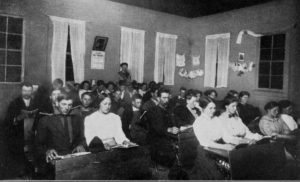 Her work demonstrates her gifts of writing, organizing, campaigning and, especially, photography. On the backsides of photos are handwritten descriptions. And because of this, they serve as reliable documents of the lives and times of the Kentucky Mountain People. My favorite of all the photos is one of an elderly woman sitting on the front porch of her new home. Her neighbors built the home for her, to honor her newly gained ability to read and write.
Her work demonstrates her gifts of writing, organizing, campaigning and, especially, photography. On the backsides of photos are handwritten descriptions. And because of this, they serve as reliable documents of the lives and times of the Kentucky Mountain People. My favorite of all the photos is one of an elderly woman sitting on the front porch of her new home. Her neighbors built the home for her, to honor her newly gained ability to read and write.
If I were to follow all the many roads through which Mrs. Stewart’s research might take me, I would never finish this book. So, instead I am limiting myself now to some of the methods she used.
Written Names Replace “Marks”
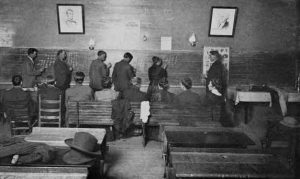 Many of the adult students couldn’t sign their names. Instead, they drew an X or a scribble on a signature line. Since they were unable to sign checks, they seldom held bank accounts. They could neither read nor sign legal documents. Soldiers were unable to sign draft cards. This was a first priority for Mrs. Stewart. It was taught the first night, and the learners were delighted.
Many of the adult students couldn’t sign their names. Instead, they drew an X or a scribble on a signature line. Since they were unable to sign checks, they seldom held bank accounts. They could neither read nor sign legal documents. Soldiers were unable to sign draft cards. This was a first priority for Mrs. Stewart. It was taught the first night, and the learners were delighted.
“Some were so intoxicated with joy that they wrote their names in frenzied delight on trees, fences, barns, barrel staves and every available scrap of paper; and those who possessed even meager savings, drew the money out of its hiding place and deposited it in the bank, wrote their checks [which is another skill which was taught early on] and signed their names.”
Mrs. Stewart designed grooved writing pads on which students could trace all the letters of the alphabet, in cursive, and write their names. Once they were able to write, she encouraged them to write letters, send them to her, and in exchange they were given a Bible.
“The tablet contained, first, a white sheet of blotting paper into which the name of the student was to be written in indented letters a number of times, that his first writing exercise might be his name, the thing which he craved most to learn.
Next, there were sheets of delicate pink, violet, yellow and green blotting papers filled with sunken letters which the students traced in grooves to gain form quickly, having already acquired facility of movement in their daily duties, by constant use of fingers for manual work. In this respect they had the advantage of the child who must learn movement as well as form, from the start.
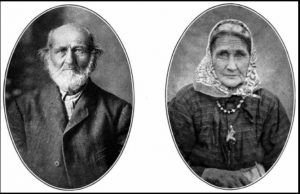 Age-Appropriate, Practical Textbooks — In the early years, a newspaper was published, distributed, and used as a beginning reading text and recruitment tool. The Rowan County Messenger contained a simple vocabulary, drills, and news, announcements, and stories of interest to the community. Eventually, these were replaced with textbooks written by Mrs. Stewart, Country Life Readers, books 1, 2 and 3. Later, she added The Soldier’s First Book and The Soldier’s Tablet.
Age-Appropriate, Practical Textbooks — In the early years, a newspaper was published, distributed, and used as a beginning reading text and recruitment tool. The Rowan County Messenger contained a simple vocabulary, drills, and news, announcements, and stories of interest to the community. Eventually, these were replaced with textbooks written by Mrs. Stewart, Country Life Readers, books 1, 2 and 3. Later, she added The Soldier’s First Book and The Soldier’s Tablet.
“Someone had to provide the tools with which these men and women could dig their way out of the mental dungeon in which they were imprisoned. A reader was prepared for them and brought out as quickly as possible.”
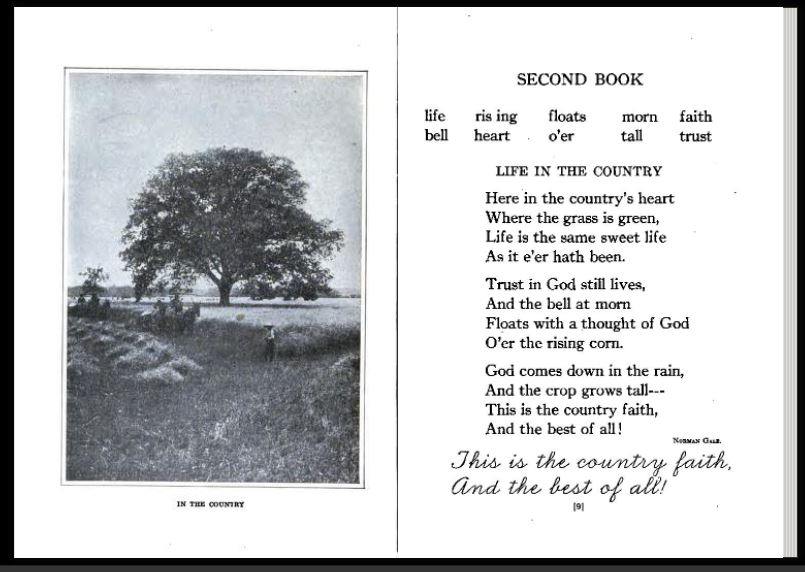 Mrs. Stewart’s readers were modeled after the McGuffey Readers, which were commonly used textbooks of the times. The difference between them was content. The Country Life Readers were more age-appropriate, and they addressed the needs of this population.
Mrs. Stewart’s readers were modeled after the McGuffey Readers, which were commonly used textbooks of the times. The difference between them was content. The Country Life Readers were more age-appropriate, and they addressed the needs of this population.
Like the McGuffey’s, lessons contained word lists, instructional stories, and sentences in cursive to be copied repeatedly in order to gain writing skills. In the back were lists of words for the purpose of correct spelling. And also like in the McGuffey books, sample letters were provided for students to copy. One of Mrs. Stewart’s earliest lessons shows how to address a letter, and not much farther on is a lesson in writing checks, with a sample of a handwritten check. The words of the lesson are:
I have my money in the bank.
Now I will write a check for my father.
I write the date.
I write the name of my father.
I write the amount of money in figures and in words.
I write what it is for.
I sign my name.
Now I will read my check to see that it is correct.
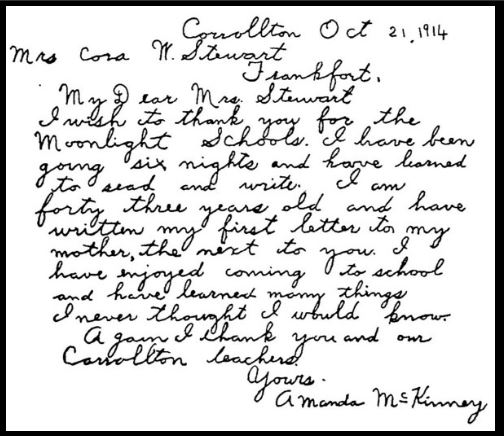 Sample letters proved invaluable, and, as a result, Mrs. Stewart received and saved many handwritten letters. She has published many of them, and others are stored in University archives. Photos of the letters show correct letter form, and a remarkable accuracy in spelling.
Sample letters proved invaluable, and, as a result, Mrs. Stewart received and saved many handwritten letters. She has published many of them, and others are stored in University archives. Photos of the letters show correct letter form, and a remarkable accuracy in spelling.
Mrs. Stewart was especially pleased with the textbooks she designed for young soldiers. Teaching them to read and write letters to and from home was a great help in the problems of homesickness and loneliness. Mrs. Stewart was quick to point out that soldiers, upon enlisting, were given Bibles which they couldn’t read. She changed that!
Not only were soldiers able to write letters to home, but they began receiving letters written by family members who were previously illiterate. This was a great booster of morale for many.
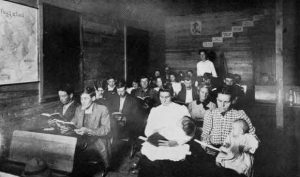 Social Conscience, Practical Skills, & World Affairs — The textbooks also contained stories about the proper management of property, care of livestock, growing of crops, personal hygiene, and more. The texts encouraged patriotism and morality. They also contained Bible passages and hymns.
Social Conscience, Practical Skills, & World Affairs — The textbooks also contained stories about the proper management of property, care of livestock, growing of crops, personal hygiene, and more. The texts encouraged patriotism and morality. They also contained Bible passages and hymns.
Other course work was covered, but not all were required to take all the courses. (Reading and writing were prioritized.) Courses were offered in civics, English, health and sanitation, geography, home economics, agriculture, horticulture, and good roads. Four were chosen from this list, based on their suitability to specific districts. Lessons in these areas were also included in the Country Life Readers.
Drilling Words and Sentences — The subject of English was quite popular, and this was where students learned to discern between dialect and proper English. When using careful pronunciation, it is easier for students to sound out words.
“The letter ‘g’, so often ignored by illiterates, in ‘ing’ was reinstated to its proper dignity and use, through drills on such words as ‘reading’ ‘writing’, ‘spelling’…
Other common mispronunciations, of words like crick and skeered, were corrected through continual drilling. Mrs. Stewart also required the repetition of sentences. This served a double purpose. Not only was pronunciation improved, but lessons were being taught. What a joy this much have been to watch. It reminds me of the Broadway Musical, My Fair Lady, when Professor Henry Higgins taught the flower girl, Eliza Doolittle, to speak better English.
Students were also encouraged to recite and to memorize poetry, and Mrs. Stewart selected poems very carefully. These were instructive as well as beneficial to pronunciation and memory. One choice was a stanza from Henry Wadsworth Longfellow’s, which follows.
What a legacy this mountain girl has left for us! She was a true lover of literacy.
The Ladder of St. Augustine
(H. W. Longfellow)
The heights of great men reached and kept
Were not attained by sudden flight,
But they, while their companions slept,
Were toiling upward in the night.
Coming next: Chapter Seven — Trials of a Classroom Therapist
from Dyslexic no More: Saved by the ABC’s
by Meg Rayborn Dawson (homeschooling mom of 9)
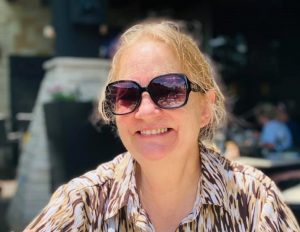
MS, Exceptional Student Education (Univ. of W. Florida) emphasis on Applied Behavior Analysis
MA, psychology (Grand Canyon University)
Bachelor of Arts (Northwest Nazarene University)
***************************************************************

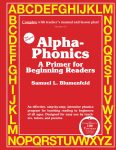
For Parents who are concerned about assuring a solid base for their Children’s education. READING is the bedrock. One good way to assure the best results is to teach your OWN children to read. And it is much easier than you ever dreamed. All you need is a good program like ALPHA-PHONICS. Alpha-Phonics has been used by tens of thousands of Parents, easily and successfully FOR 38 YEARS. Most Parents find they only need 15-30 minutes a day and can complete the course in only a few Months. Parents need NO experience or special training to teach their Children to become excellent readers. This may sound impossible, but, if you read the reviews and testimonials below, you will learn it is true.

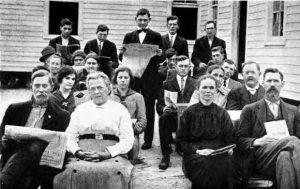
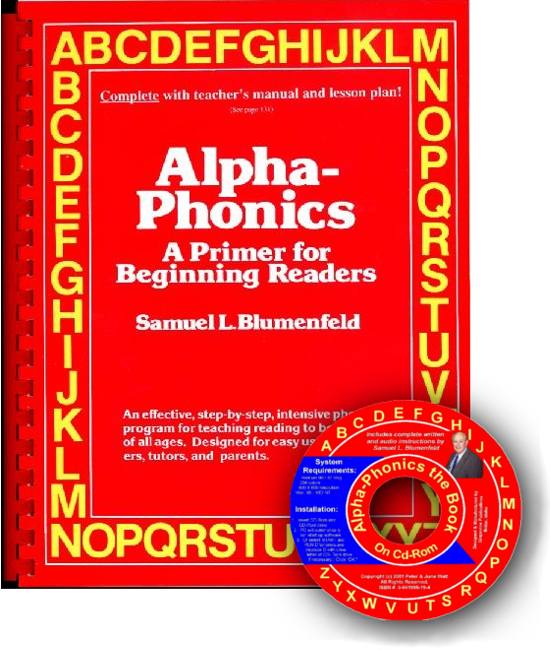 Alpha-Phonics
Alpha-Phonics The Alphabet Song!
The Alphabet Song! Water on the Floor
Water on the Floor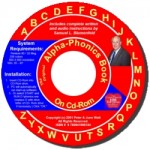 Alpha-Phonics the Book on CD Rom
Alpha-Phonics the Book on CD Rom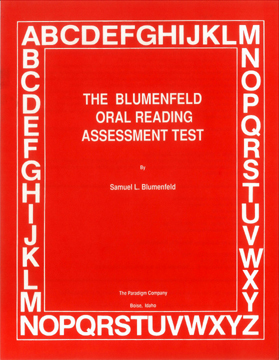 Blumenfeld Oral Reading Assessment Test
Blumenfeld Oral Reading Assessment Test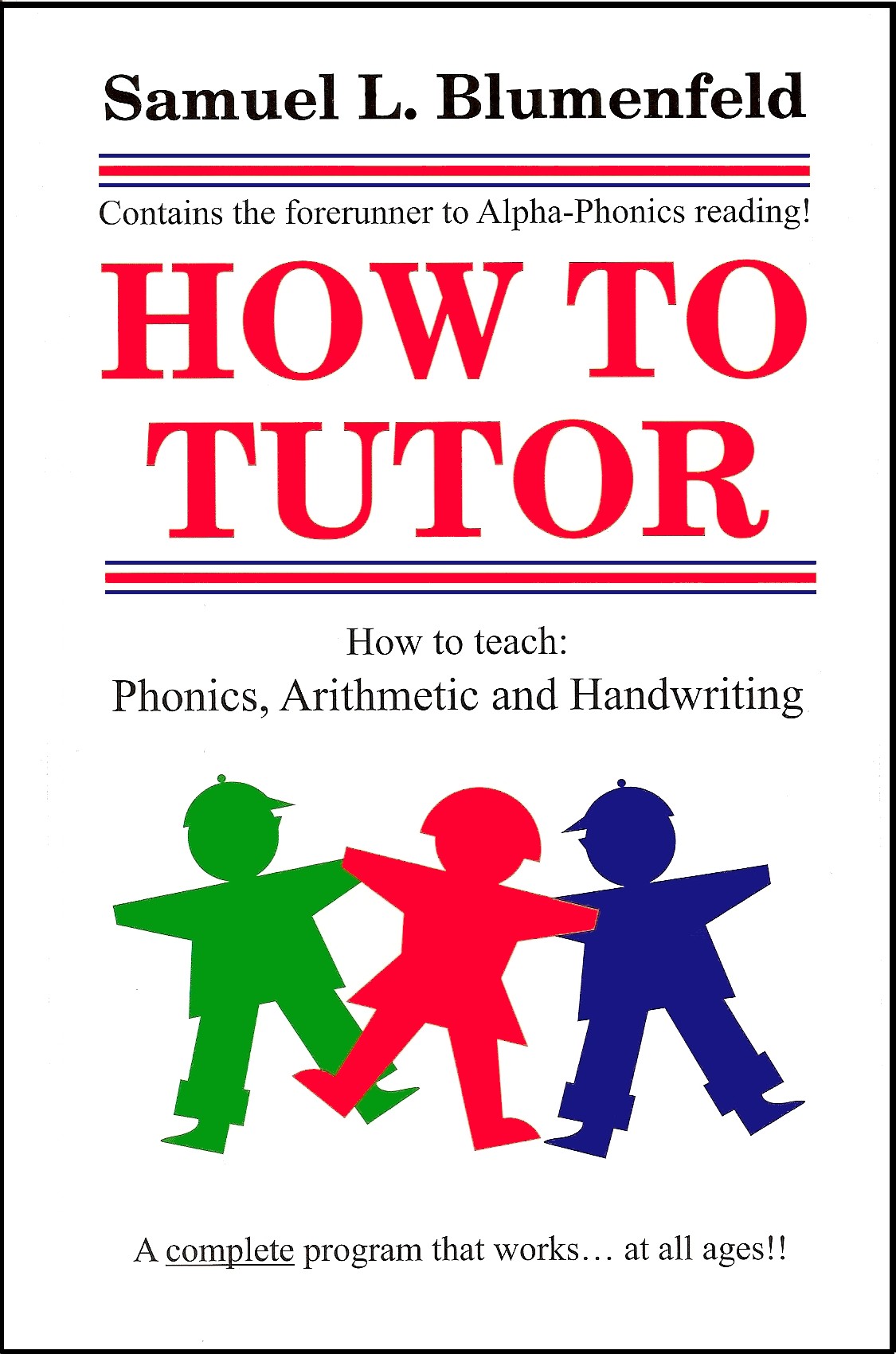 How To Tutor
How To Tutor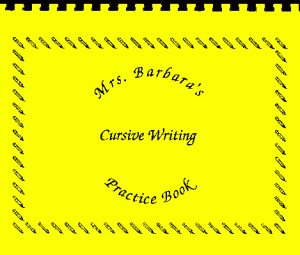 How To Tutor Cursive Handwriting Workbook
How To Tutor Cursive Handwriting Workbook
Leave a Reply
You must be logged in to post a comment.